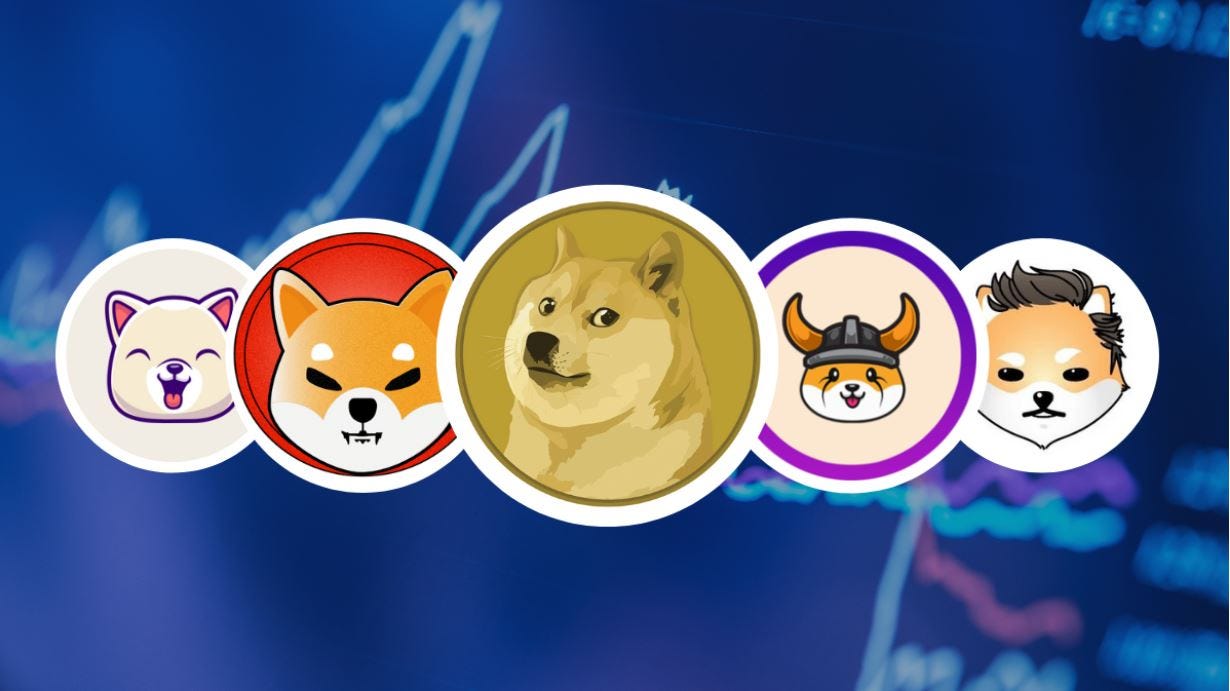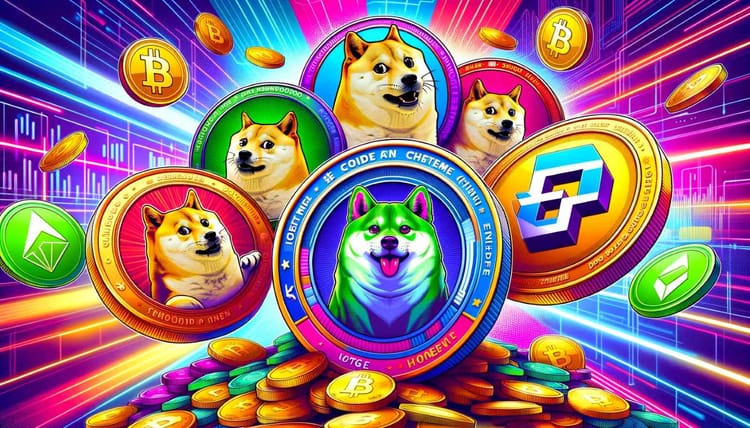Crypto Guide: What are Meme Coins?

Bitcoin's exciting market action may dominate the crypto headlines, but meme coins are getting their fair share of attention. Bonk, KangaMoon, and Shuba Inu are leading the charge for meme coins, with Solana joining the meme coin charge, thanks to coins based on its blockchain. Bonk added 10% in the past day, Dofwifhat 20%, and Popcat jumped 35%. Meme coins are rising again, sustaining attention to Bitcoin and the cryptocurrency industry in general.
These past few weeks, meme coins have joined Bitcoin in the spotlight. But what are meme coins, and should you also join the frenzy and buy and invest in them? Like any form of investment, it's crucial to understand these products and the market where they operate.
To fully understand 'meme coins,' it's best to first appreciate the value of internet memes in recent times, which serve as the coins' genesis. Internet memes are cultural items spread over the internet or social media platforms like Twitter and Facebook. Memes come in different forms- images, GIFs, videos, or other viral sensations, and now, these memes have given rise to cryptocurrencies. In short, meme coins are a form of digital currency that relies on memes to gain wide acceptance and popularity.
These coins often started as jokes or parodies of established cryptos before gaining some traction and becoming successful in the industry. Some of the most popular meme coins are Dogecoin, Shiba Inu, and Safemoon. The growing literature on meme coins isn't complete without touching on Dogecoin, the crypto that gained massive popularity in 2021.
Do they work like BTC and other top altcoins?
Meme coins, like Dogecoin and Shiba Inu, work like established cryptocurrencies. These digital coins are also built on blockchain technology, and they're decentralized, which means these projects are outside the control and interference of a central authority, like a national government or financial institution. Also, transactions are verified through a network of computers, and all transactions are verifiable on a public ledger. In short, meme coins, like Bitcoin and leading altcoins, are immutable and transparent.
The main differences lie in their creation and potential use cases. Meme coins started out as jokes or parodies of popular coins, and they are not intended to be used as a serious form of currency to pay for products and services. Instead, they're the subject of speculation, often used for trading in a volatile market. And speaking of volatility and price action, many meme coins are in the headlines for their crazy price actions.
From internet jokes to valuable digital coins

Dogecoin may have been one of the first true meme coins, but other up-and-coming meme coins, including BOME, dominate today's fast-moving market. BOME, or the Book of Memes, is one of the latest crypto projects to hit the market. It aims to redefine the Web3 culture by integrating memes, decentralized storage solutions, and degen gambling and trading in a single project. The developers see the BOME as a digital compendium of all meme coins produced, and each piece is immortalized on its blockchain.
This crypto debuted in the market last March 14th, initially priced at $0.0000496. In two days, the meme coin's price rose to $0.012, achieving a market cap of over $1 billion. As of March 18th, BOME trades near the $0.01403 level, leading the charge among meme coins.
Solana, the blockchain on which BOME is based, is also trending. It finally hit the $200 level, partly driven by the hyper-demand for the new meme coin. Solana is gaining traction in the market, with many participants pointing to its efficiency as a viable alternative to Ethereum-based projects. It works like Ethereum, facilitating decentralized apps or dApp development and allowing crypto transactions.
Solana's use of the hybrid protocol system and time-stamp technology that works around the proof-of-history (PoH) makes it different. The blockchain creates a verifiable and secure timestamp for every transaction, helping reduce speed time. It's one feature that makes the Solana blockchain a popular alternative to Ethereum and the site for many crypto projects, including BOME and other meme coins.
So, should you invest in meme coins?
The meme coin frenzy is on again; we can see this in the ongoing price action. In the last two weeks, the market saw a rapid price rise, with relatively new coins leading the charge, including BOME and Pepe. Pepe is another notable meme coin that's benefited from significant volatility over the last few weeks. Last month, Pepe surged by roughly 400%, and over the past three months, it grew by 385%, delighting investors and watchers.
While the price has stabilized recently, some popular coins have declined. Like the greater crypto industry, many think this latest price development is just a momentary blip in the scheme. Many are holding and investing in the future of crypto and the blockchain. So, should you take these meme coins seriously and join traders and investors in trading?
Like Bitcoin, these meme coins are the subject of intense attention and even scrutiny. Many experienced traders and finance experts have raised concerns about the viability of meme coins or their impact on the bigger crypto industry. Many say that these coins contribute to the highly speculative action of the market. Meme coins often gain traction and following on social media platforms like Reddit and Twitter, where users are easily caught up in the hype surrounding these meme coins.
Also, most say physical assets or revenue-generating projects do not back meme coins. It's the underlying wisdom now, but some meme coin creators invest resources to make their projects stand out. Still, putting your money into these coins is a risky trade. In short, the market demand for these coins is traditionally based on hype, often driven by social media engagement and celebrity endorsements.
Some even question the coins' supposed support for decentralization. Although meme coins may be based on Bitcoin and other altcoins' decentralized nature, many observers speculate that just a few persons may eventually control the contract.
Still, meme coins remain integral to the cryptocurrency market and now enjoy a large (and often enthusiastic) following. Many investors and retail traders think that these coins have the potential to redefine cryptocurrency. Others see these coins as opportunities to make a quick profit and ride its wave of momentum, while others only see meme coins as a passing fad. So, what's your take on meme coins and their current price action?




